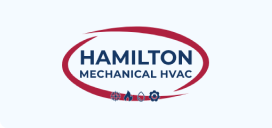Frequently Asked Questions
There are many factors that will change the cost of an installation. Such factors can include efficiency ratings, accessories installed such as a whole house humidifier, as well as Indoor air quality upgrades such as UV lights, high efficiency filters. It can range anywhere from $6,000-$12,000.
Most equipment can can have a service life of 15-25 years with routine maintenance performed by a qualified contractor.
$400.00 to $1500.00
Your HVAC system should be sized by a qualified contractor. It will be sized using a calculation to determine the heat loss and heat gain of your home. If this is not done properly you could wind up with an oversized air conditioner which in a humid climate will leave you with a wet sticky feeling in your house. If your furnace is under sized or oversized you will also be left feeling uncomfortable.
Change you filter on a regular and have a maintenance contract to keep your system clean.
If you are running your air conditioning in the northeast part of the country with hot humid summers the air conditioner should run as long as it can so that it continues to pull the humidity out of the air.
The air conditioner should produce a 15-20 degree temperature difference (delta T) between the room temperature and the discharge air temperature.
You set the temperature to where you are comfortable.
A 1” filter thick pleated filter should on average be changed every 3 months. If you have 4” filter media such as an aprilaire filter it can on average be changed once a year as there is more surface area to collect dirt.
Replace the filter and hire a qualified contractor to ensure the coils are kept clean and the drain line and pan are kept clean.
Once a year in the spring.
-First, make sure you have a clean filter installed. A dirty filter can cause a variety of issues for your HVAC system.
-Second, make sure the thermostat is set to the appropriate settings and functioning.
-Finally, make sure the circuit breakers are turned on. If they are tripped, the safest course of action is to call for service.
- A burning smell coming from your furnace.
- An increase in your energy bills.
- Unusual or loud noises, such as banging, during operation.
- Uneven heating throughout your home.
Other signs include frequent short-cycling, odd odors, or leaks around the furnace. If your furnace stops working entirely, it’s a strong indication that it requires repair or replacement.
If your cooling system isn’t turning on, start by checking for a tripped switch. If the switch keeps tripping, it’s best to call a specialist for further investigation. Another common issue is rapidly adjusting the thermostat, which can temporarily prevent the system from starting. Allow the system 15 minutes to reset; if it still doesn’t turn on, there may be a more complex problem requiring a licensed technician.
If your cooling unit is leaking condensation, a common cause is a blockage in the condensate drain line. When the drain line is clogged, condensation can back up and start to leak. To resolve this, you should have the drain line cleaned. It’s also a good idea to get a complete system check to make sure there are no other underlying issues.
A sudden increase in energy bills is often due to your cooling or heating unit operating less efficiently. This inefficiency can result from missed regular maintenance, causing the system to work harder to cool or heat your home. An aging system can also contribute to higher energy costs. To prevent these issues, schedule regular maintenance to ensure your cooling and heating systems run at peak efficiency.
If your A/C is running but not producing cold air, several issues might be at play:
- Refrigerant Issues: There may be a refrigerant leak or the system might need a refrigerant refill.
- Obstructions: Debris or leaves around the outdoor unit can block airflow and affect cooling performance.
If you’re experiencing warm air instead of cool air, it’s best to have a technician assess the situation to diagnose and resolve the problem.
To determine if your toilet is leaking and whether you should be concerned, look for these signs:
- Unexplained Noises: If you hear noises from your toilet when it’s not in use, it might indicate a leak.
- Check the Flapper: Inspect the rubber flapper in the toilet tank for corrosion or damage.
- Overflow Pipe: Ensure the water level in the tank is below the overflow pipe.
- Food Coloring Test: Add a few drops of food coloring to the tank and see if the water in the bowl changes color.
A leaking toilet is a concern as it wastes water and can lead to higher utility bills. It’s wise to consult a professional plumber for either minor repairs or more extensive issues.
To avoid toilet clogs, follow these tips:
- Avoid Flushing Non-Flushable Items: Don’t flush items like baby wipes, paper towels, or feminine products.
- Retrieve Foreign Objects: If a foreign object, such as a toy or hairbrush, falls into the toilet, avoid flushing it.
- Use Toilet Paper Sparingly: Excessive toilet paper can lead to clogs, so use only as much as needed.
By adhering to these practices, you can reduce the risk of clogs and maintain proper toilet function.

